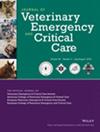Clinical Applications of the ARDSVet (Acute Respiratory Distress Syndromes in Veterinary Medicine) Definitions in Small and Large Animal Patients
Abstract
Objective
To illustrate the use of the ARDSVet (Acute Respiratory Distress Syndromes in Veterinary Medicine) definitions in small and large animal patients using a case-based approach.
Etiology
Acute respiratory distress syndrome (ARDS) in veterinary patients is triggered by a wide range of clinical insults. These include probable risk factors such as systemic inflammation, pancreatitis, and sepsis, as well as possible risk factors such as blood transfusions and ventilator-induced lung injury. These conditions may lead to diffuse alveolar damage and increased pulmonary capillary permeability.
Diagnosis
ARDS remains challenging to diagnose, particularly in veterinary patients with variable resources. The updated ARDSVet definitions offer a structured framework based on five criteria: a known or suspected risk factor, onset of respiratory distress within 1 week, exclusion of cardiogenic edema and volume overload, thoracic imaging (including point-of-care ultrasound) demonstrating diffuse pulmonary infiltrates, and impaired oxygenation assessed by PaO2/FiO2 or SpO2/FiO2 ratios. Case vignettes highlight revised oxygenation thresholds, expanded use of point-of-care ultrasound, and the role of advanced respiratory support techniques.
Therapy
ARDS treatment is primarily supportive, focusing on oxygen supplementation, high-flow nasal oxygen, and/or mechanical ventilation, along with management of the underlying cause. While ARDSVet does not offer formal treatment guidelines, case vignettes illustrate how supportive strategies may be adapted across disease stages without endorsing any specific therapeutic interventions.
Prognosis
Prognosis in animals with ARDS is influenced by the severity of respiratory compromise, the underlying cause, and the timelines of appropriate interventions. The updated definitions will aid clinicians in early and timely recognition of ARDS, although further studies are needed to assess its impact on clinical outcomes.


 求助内容:
求助内容: 应助结果提醒方式:
应助结果提醒方式:


